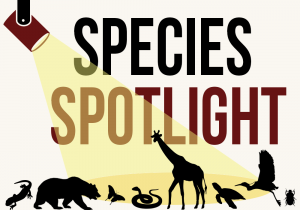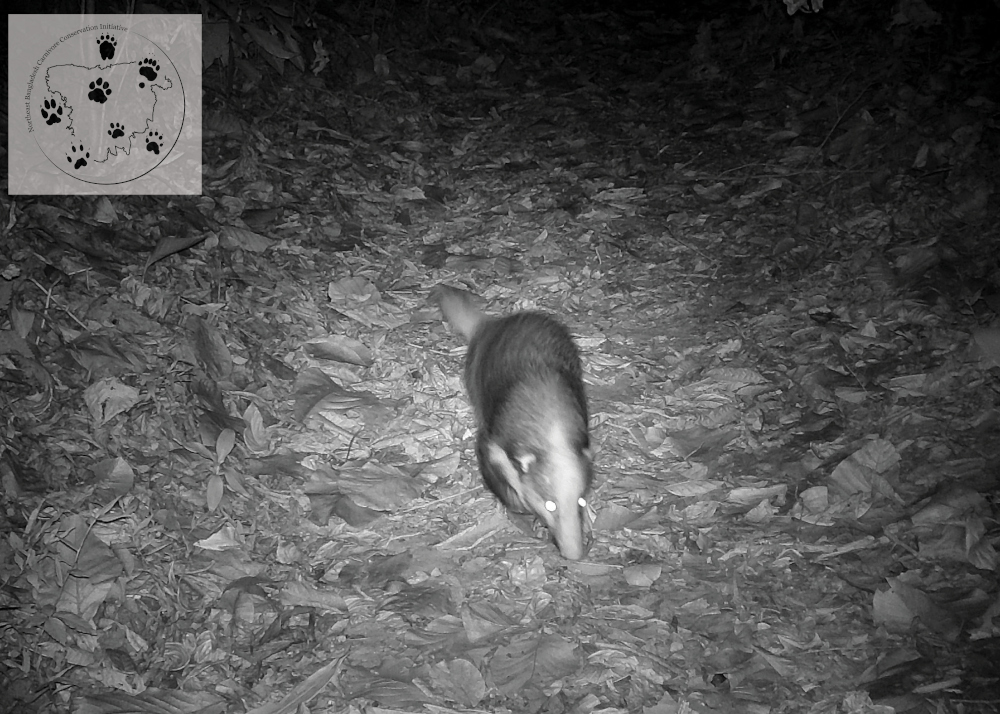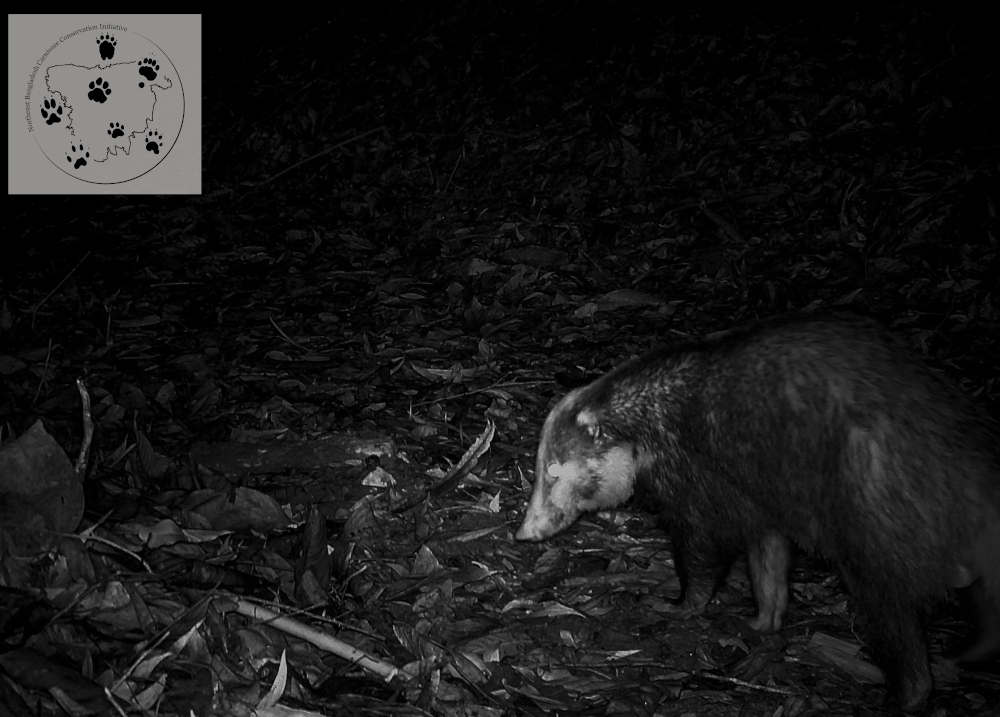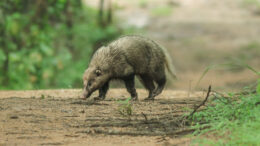 Badgers are often considered a symbol of grit and gallantry, characterized by their rare ability to hold ground when confronted by a larger threat — be it from people or from other predators. The greater hog badger, a small Asian carnivore, is no different. But grit can only get it so far: The species is a victim of rampant snaring, and very little is known about its ecology.
Badgers are often considered a symbol of grit and gallantry, characterized by their rare ability to hold ground when confronted by a larger threat — be it from people or from other predators. The greater hog badger, a small Asian carnivore, is no different. But grit can only get it so far: The species is a victim of rampant snaring, and very little is known about its ecology.
Species name and description:
The greater hog badger (Arctonyx collaris) is a terrestrial species with a fantastic ability to burrow underground tunnels. It looks like a miniature bear thanks to its stocky build, large head, sturdy legs, grizzled gray-to-tan coat, elongated white face profile, and black facial stripes. But unlike bears it has two remarkable features: a pinkish, piglike snout and massive foreclaws, both evolved to aid in digging and assisting its specialized vermivore (worm-eating) diet.
Although it rarely exceeds 3 feet in head-to-body length, the greater hog badger is the second-largest species of the family Mustelidae, just behind the wolverine (Gulo gulo).
Where it’s found:
Undisturbed lowland and hilly mixed-evergreen or deciduous forests are the greater hog badger’s primary habitat — and those are in increasingly short supply. The species is currently concentrated in the countries of Southeast Asia and Northeast India. Its presence is suspected in southern parts of China’s Yunnan and Guangxi provinces and peninsular Malaysia but is deemed extinct in Vietnam. In Bangladesh, the species has 6–8 valid and documented sighting records and is thought to be present only in the country’s dipterocarp-dominated, hilly southeastern forests.

IUCN Red List status:
Vulnerable across the species’ range, with a population decline of more than 50% over the past 15 years in Indochina.
Because of the sharp, continuous decline of forested habitats, the greater hog badger is also assessed as vulnerable in Bangladesh.
Major threats:
On top of the urgent threat of habitat loss, as forests shrink more with each passing day, the greater hog badger is also severely troubled in Southeast Asia due to hunting, illegal trade and the snaring crisis.
Notable conservation programs:
Countries of Southeast Asia are working to stem the tide of snaring, which will eventually benefit the greater hog badger. However, there’s practically no other concerted effort to conserve the species.
In Bangladesh the hog badger is protected by the Wildlife (Conservation and Protection) Act. But so far, in the country, there exists only one peer-reviewed study of the species.
Northeast Bangladesh Carnivore Conservation Initiative has been working since 2018 to bring hog badgers and similar threatened, little-known carnivores into the conservation limelight.
My favorite experience (a tale in three parts):
Dec. 16, 2016. While watching the Harry Potter franchise film Fantastic Beasts and Where to Find Them, I noticed the use of badgers as a heraldic sigil. I did a little digging on the internet and found some riveting portrayals of badgers in literature.
Jan. 2, 2021. I was trekking a transborder forest in northeast Bangladesh, part of a reconnaissance survey to identify potential camera-trap stations to be deployed in the later months, when I came across some unusual footprints on a sand-bedded stream. The heel pad was wider than long and jutted out with five elongated but blunt toe marks, which, in turn, were trailed by faint claw dents. It was smaller than a bear’s footprint but unlike anything I’d ever seen before. “Could this be a badger?” I thought to myself, even though the forests of Bangladesh that are known for badgers were hundreds of miles away. Interestingly, back then, it had only been six months since the first discovery of the greater hog badger from Tripura, the Indian state that neighbors and separates my study area from the southeastern forests of Bangladesh. So I clung to the possibility and followed the way of the badger.
April 25, 2021. A greater hog badger popped up at one of the camera stations! They’d never been described in this region before, although the forests of northeast Bangladesh, the western cusp of Indo-Burma hotspots for the species, have suitable habitat characteristics.
Later two more of my camera-trapping stations turned positive for hog badgers. At last, my memories of badger footprints and the photographic discovery fortify my love for the fantastic beasts that call the northeastern forest networks home.

What else do we need to understand or do to protect this species?
The northeastern forests of Bangladesh are traditionally described as “empty,” although such an assessment lacks systematic scientific investment. In fact these forests are unbelievably biodiverse. For example, all 27 of the country’s Carnivora species are believed to live there. A similar statement could be made about the forest stands of adjoining states of India (Meghalaya, Tripura, Manipur, etc). Together the region forms a “biological blank spot” — a major land area where we lack scientific knowledge of what lives there.
To protect and understand hog badgers — and several sympatric less-studied carnivores — these habitats need immediate conservation attention. That should involve thorough research, conservation education programs, and sustainable-yet-strict habitat-management practices.
Key Research:
-
- Akash, M., Zakir, T. (2020) Appraising carnivore (Mammalia: Carnivora) studies in Bangladesh from 1971 to 2019 bibliographic retrieves: trends, biases, and opportunities, 15(12): 17105–17120
- Chen, W., Newman, C., Liu, Z., Kaneko, Y., Omote, K., Masuda, R., Buesching, C.D., Macdonald, D.W., Xie, Z. and Zhou, Y. (2015) The illegal exploitation of hog badgers (Arctonyx collaris) in China: genetic evidence exposes regional population impacts. Conservation genetics resources 7(3): 697–704
- Helgen, K.M., Lim, N.T. and Helgen, L.E. (2008) The hog-badger is not an edentate: systematics and evolution of the genus Arctonyx (Mammalia: Mustelidae). Zoological Journal of the Linnean Society 154(2): 353–385
- Zakir, T., Debbarma, H., Mahjabin, R., Debbarma, R., Khan, Z., Minu, M. R., Zahura, F. T. and Akash, M. (2021) Are north-eastern forests of Bangladesh empty? Insights from camera-trapping into spatiotemporal activity pattern of mammals in a semi-evergreen national park. Mammal Study 46(4), 1–17
- Zhang, L., Zhou, Y.B., Newman, C., Kaneko, Y., Macdonald, D.W., Jiang, P.P. and Ding, P. (2009) Niche overlap and sett-site resource partitioning for two sympatric species of badger. Ethology Ecology and Evolution 21(2): 89–100
- Zhou, Y., Chen, W., Kaneko, Y., Newman, C., Liao, Z., Zhu, X., Buesching, C.D., Xie, Z. and Macdonald, D.W., 2015. Seasonal dietary shifts and food resource exploitation by the hog badger (Arctonyx collaris) in a Chinese subtropical forest. European Journal of Wildlife Research 61(1): 125–133
![]()


